| |
We are not the first.
We did not originate here. Nor are
we the highest civilization that has used planet Earth for its
ongoing cosmic journey.
For millions of
years, Earth has been visited time and time again by other
civilizations from other star systems.
Sometimes, more advanced
beings travel here to establish colonies. Other times it is
used by groups of individuals for reincarnational
and karmic purposes. And there are many other planets in our
universe that can serve the same purpose.
It is well known that
Earth goes through cycles of physical change. From time to time, a relatively favorable window opens up making it fit for habitation by
individuals with 3-dimensional physical bodies. The past 10,000
years or so has been one of those windows. During that time, we have
mushroomed to more than 7 billion people on a gigantic karmic
journey.
For sure, others have
come before us, each
with their own purpose, both bad and good, aggressive and peaceful.
Civilizations such as Lemuria, Atlantis, and many others have been a
part of this planet's history.
Is there evidence for this?
Have artifacts and other reminders of these past civilizations been left behind
to contemplate?
The answer is yes. For the most part, this evidence has been swept
under the rug by mainstream scientists and theologians because it does not fit their
theories and explanations of our past history.
Nevertheless, the evidence is
there. You are free to evaluate some of it, and draw your own conclusions...
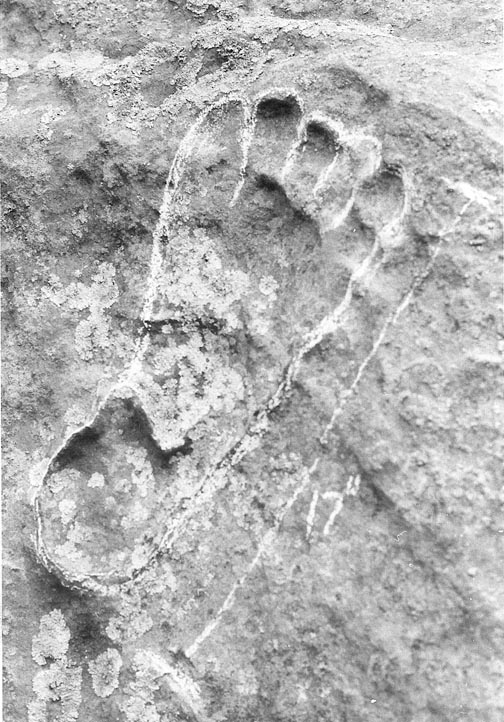 |
|
In 1896
the American Anthropologist journal presented
information about a fossilized human imprint in stone
near Parkersburg, West Virginia. The track was 17 inches
long, and was found embedded in stone dated at 150
million years old.
For more click here
|
|
I
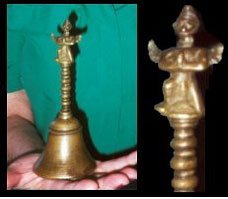 |
|
In 1944 a metallic bell was found
inside a large piece of coal in West Virginia by Newton
Anderson. The bituminous coal that was mined in his area
of the state is estimated to be about 300 million years
old. |
|
|

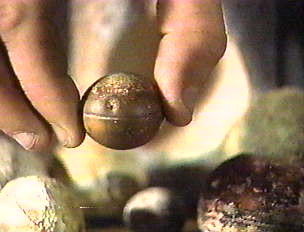 |
3 Billion Year Old
Manufactured Spheroids?
Over the past several decades,
miners at the Wonderstone silver mine in South Africa have dug up small, metallic spheres
measuring 1-4 inches, with
mysterious parallel lines encircling them.
Referred to as the Klerksdorp
Spheres, these objects are extremely hard and cannot be
scratched, even by steel. The rock formations from which they
were taken is considered to be 2.8 billion years old!
At least 200 of these spheres
have been found.
For more
click here |
|
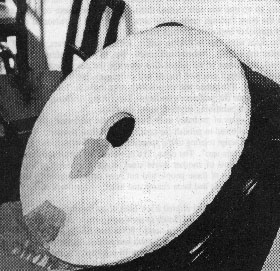 |
In 1938, Chi Pu Tei, a
professor of archaeology at Beijing University, and his students made a
remarkable discovery in caves they were
exploring in the Himalayan Mountains.
In those caves, were
hundreds of stone discs, approximately 1 foot in diameter, and
approximately twelve thousand years old.
Twenty years later the disks were closely examined by Dr. Tsum
Um Nui of Beijing. He was able
to detect hieroglyphic symbols in the spiral tracks.
Dr. Tsum
translated
part of the message that the
mysterious glyphs contained. Amongst other things, they told a
story of spaceships piloted by people called the Dropa, which
crash landed in that mountain range.
Most of the crash survivors
were killed by local people, which may have accounted for the
many skeletal remains found in the same cave as the Dropa
stones. Dr. Tsum’s findings were subsequently reported in the
scientific literature and, not surprisingly, met with a great
deal of derision and skepticism.
For more click
here |
|
|
 |
In June, 1851, Scientific American reprinted a report about a metallic vase
that as blasted out of solid rock when workmen were excavating on
Meeting House Hill in Dorchester, MA, in 1851.
The bell-shaped
vase measured 4-1/2 inches high
and 6-1/2 inches at the base, and was composed of a zinc and silver
alloy. On the sides were figures of flowers in bouquet arrangements,
inlaid with pure silver. The estimated age of the rock out of which
it came: 100,000 years.
After over 150 years of investigation, the
artifact remains unidentified. Originally presented to Harvard
University, it has been passed along to the Museum of Fine Arts in
Boston, who cooperated with M.I.T. in an attempt to determine its
place and period of origin.
|
|
|
 |
An object
that looks like a coin, was taken from a well boring near Lawn Ridge, Illinois.
Found
at a depth of 114 feet below the surface, the deposits in which
the coin-like object was found was estimated to be 400,000
years old.
|
|
|
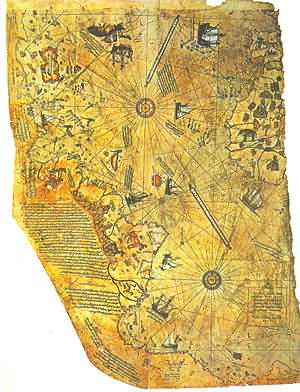 |
In 1929, a group of
historians found an amazing map drawn on a gazelle skin.
Research showed
that it was a genuine document drawn in 1513 by Piri
Reis, a famous admiral of the Turkish fleet in the
sixteenth century.
The Piri
Reis
map shows the western coast of Africa, the eastern coast
of South America, and the northern coast of Antarctica. The northern coastline of Antarctica was also
perfectly detailed.
How did Piri
Reis manage to draw such an accurate map of the
Antarctic region 300 years before it was discovered when
the coastline was under ice.
Geological evidence
confirms that the latest date Queen Maud Land could have
been charted in an ice-free state is 4000 BC.
For
more click here
|
|
|
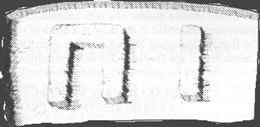 |
"Raised letter-like
shapes found inside a block of marble from a quarry near
Philadelphia, Pennsylvania (Corliss 1978, p. 657; American
Journal of Science 1831, vol. 19, p. 361). The block of marble
came from a depth of 60-70 feet in strata dated 500-600 million
years old." |
|
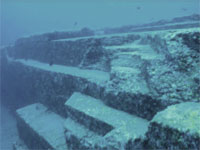
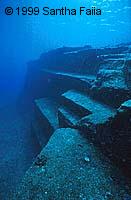 |
At the end of the last ice age some 13,000
years ago, sea levels rose an estimated 400 feet. As such, any towns, cities or
villages built anywhere near the coast would have been lost beneath the oceans forever and
possibly in a very short period of time.
In 1985, the
incredible ruins of a submerged city was
found quite by accident by a local fisherman off the coast of Japan in water approximately 100
feet deep.
The Yonaguni ruins as they are known are an
apparently urban development that cover a massive 311 miles and
actually includes eight separate sites.
Divers have reported
that in addition to the huge eight story tall structures that
many people are familiar with, there is clear evidence of roads,
paved streets, and huge altar-like formations.
Graham
Hancock, author, explorer, and researcher states in his book,
Underworld, that: �It was the submerged structures of Japan that
first awakened me to the possibility that an underworld in
history, unrecognized by archaeologists, could lie concealed and
forgotten beneath the sea.� It appears that the underwater
structures are at least 8,000 years old.
|
|
|
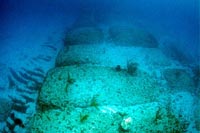


|
In the
early 1900's, famed American psychic Edgar Cayce
predicted that evidence of the lost continent of
Atlantis would appear in the Bahamas in 1968 or 1969.
Curiously, in 1968 pilots photographed from the air
structures that looked like buildings, walls and roads
under the waters off of Bimini island.
Others
have claimed to have seen pyramids and stone circles on
the sea bed, but the only thing that has been confirmed
for sure is what has become to be known as the Bimini
Road.
For
more click here
|
|

 |
The Baghdad
Battery "In 1936, while
excavating ruins of a 2000-year-old village near
Baghdad, workers discovered a mysterious small vase.
A
6-inch-high pot of bright yellow clay dating back two
millennia contained a cylinder of sheet-copper 5
inches by 1.5 inches. The edge of the copper cylinder
was soldered with a 60-40 lead-tin alloy comparable to
today's solder.
The bottom of the cylinder was capped
with a crimped-in copper disk and sealed with bitumen or
asphalt.
Another insulating layer of asphalt sealed the
top and also held in place an iron rod suspended into
the center of the copper cylinder.
The rod showed
evidence of having been corroded with an acidic agent."
For more
click here
|
|
|
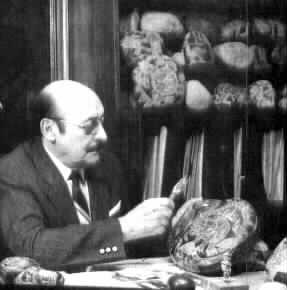
Doctor Cabrera
examining Ica stones
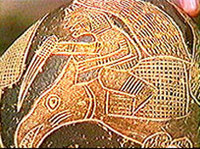
This
etching on one of the stones
seems to show a man riding a
pterodactyl.~

Woman with acupuncture
needles in
lips
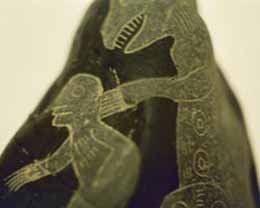
Humans in the age of dinosaurs
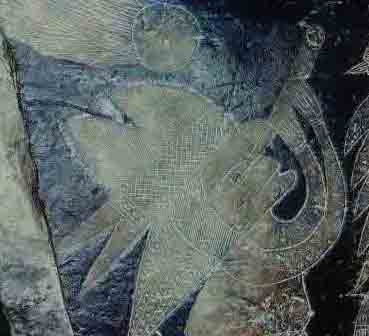
Ancient star
maps
|
In the town of Ica, Peru there is
a unique collection of over 11,000 stones that were
collected, organized, and analyzed by Dr. Javier Cabrera
Darquea.
Dr. Cabrera's home has become a
museum for these strange artifacts, which are engraved
with scenes of an ancient people, and are believed to be
an encyclopedia of ancient knowledge.
The huge cache was
unearthed when the Ica River overflowed its banks a
number of years ago destroying a nearby mountain, and
exposing an unknown cave.
An illiterate farmer claimed
to have found the cave but would not reveal its
location. News of the find caught the interest of
researchers, and the eyes of the world turned toward
Ica. Subsequently, the BBC produced a documentary on the
enigmatic discovery bringing an extraordinary amount of
focus on the Peruvian Government.
In the
collection of his museum, Dr. Cabrera has identified
what appears to be carved images of heart transplants,
genetic manipulations, caesarian section operations, a woman with three
acupuncture needles protruding from her mouth apparently
used for anesthesia, humans and dinosaurs, and much much
more.
|
|
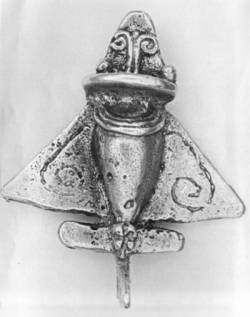

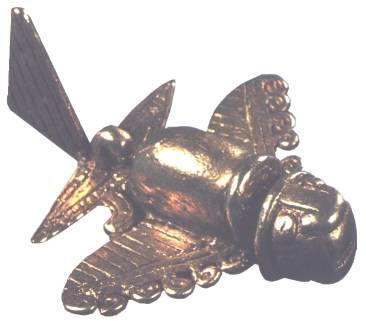
|
Is it possible
that humans developed the technology to fly ages ago -
or in civilizations that are now lost to history?
This object (left) was found in
1898 in a tomb at Saqquara, Egypt and was later dated as
having been created near 200 BCE. As airplanes were
unknown in the days when it was found, it was thrown
into a box marked "wooden bird model" and then stored in
the basement of the Cairo museum.
How is it possible that
plane-like models such as these were created more than
2000 years ago?
|
|
|
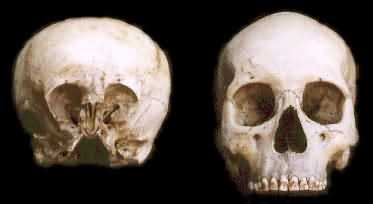
Front view of the Starchild
skull (on the left). Human skull (on the right).
Compare significant differences between depth of eye
sockets, shape of forehead, and shape/contour of the
temporal area just behind outer edges of eyes.
|
In the 1930's, in
a small rural village 100 miles southwest of Chihuahua,
Mexico,
at the back of a mine tunnel, two mysterious remains
were found: a complete human skeleton and a smaller,
malformed skeleton.
In late February
of 1999, Lloyd Pye was first shown the Starchild skull
by its owners.
Nameless then, it
was a highly anomalous skull. He initially felt it would
prove to be a rare genetic deformity of some kind.
This skull's
symmetry was astonishing, even more so than the average
human. In fact, all of its bones, most of which had
human counterparts, were beautifully shaped. But shaped
like what?
For more click here |
|
Many more of these
fascinating unexplained artifacts exist to make us wonder about our
planet's history and how we fit into it.

E-Mail
Home

|
|